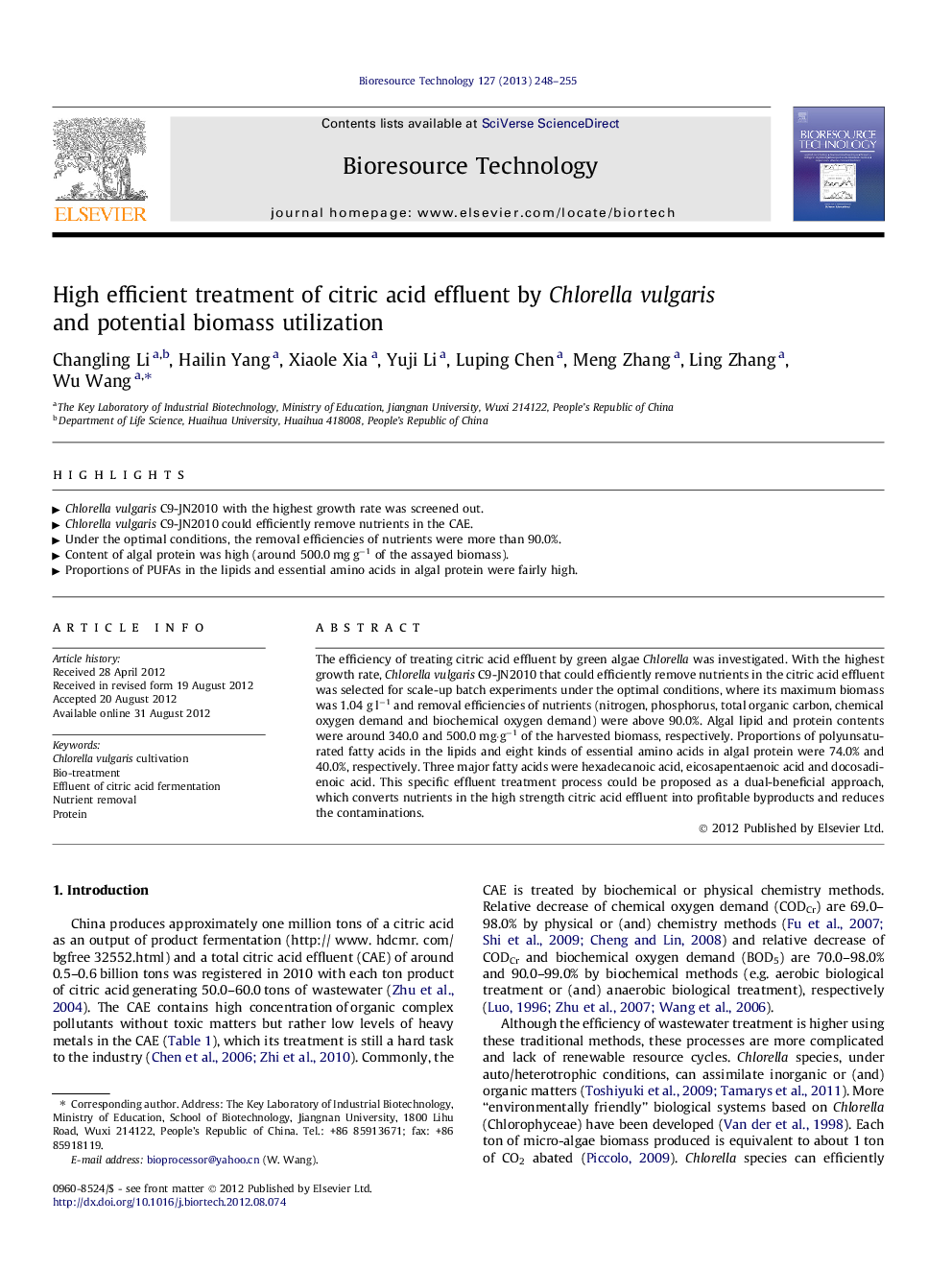| Article ID | Journal | Published Year | Pages | File Type |
|---|---|---|---|---|
| 681213 | Bioresource Technology | 2013 | 8 Pages |
The efficiency of treating citric acid effluent by green algae Chlorella was investigated. With the highest growth rate, Chlorella vulgaris C9-JN2010 that could efficiently remove nutrients in the citric acid effluent was selected for scale-up batch experiments under the optimal conditions, where its maximum biomass was 1.04 g l−1 and removal efficiencies of nutrients (nitrogen, phosphorus, total organic carbon, chemical oxygen demand and biochemical oxygen demand) were above 90.0%. Algal lipid and protein contents were around 340.0 and 500.0 mg·g−1 of the harvested biomass, respectively. Proportions of polyunsaturated fatty acids in the lipids and eight kinds of essential amino acids in algal protein were 74.0% and 40.0%, respectively. Three major fatty acids were hexadecanoic acid, eicosapentaenoic acid and docosadienoic acid. This specific effluent treatment process could be proposed as a dual-beneficial approach, which converts nutrients in the high strength citric acid effluent into profitable byproducts and reduces the contaminations.
► Chlorella vulgaris C9-JN2010 with the highest growth rate was screened out. ► Chlorella vulgaris C9-JN2010 could efficiently remove nutrients in the CAE. ► Under the optimal conditions, the removal efficiencies of nutrients were more than 90.0%. ► Content of algal protein was high (around 500.0 mg g−1 of the assayed biomass). ► Proportions of PUFAs in the lipids and essential amino acids in algal protein were fairly high.
